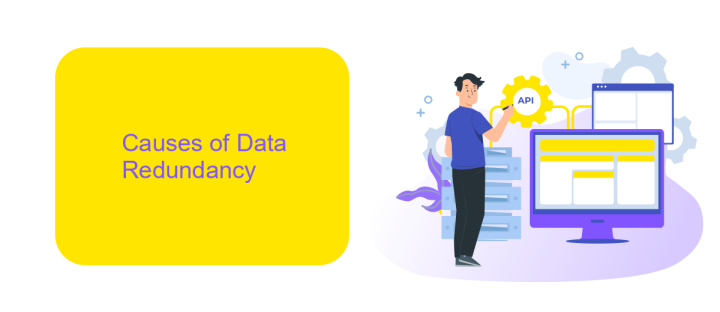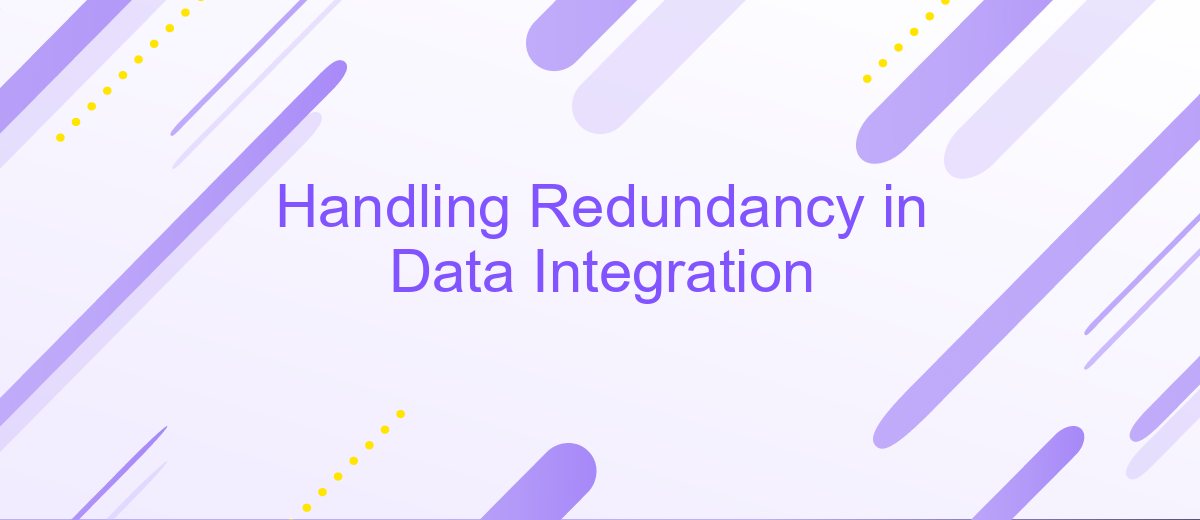Handling Redundancy in Data Integration
Handling redundancy in data integration is a critical aspect of ensuring data accuracy and efficiency. Redundancy can lead to inconsistencies, increased storage costs, and degraded performance. This article explores strategies and best practices for identifying, managing, and eliminating redundant data, thereby enhancing the overall quality and reliability of integrated data systems.
Introduction
In the modern digital landscape, data integration has become a critical process for organizations seeking to leverage diverse data sources. However, one of the most significant challenges in data integration is handling redundancy. Redundant data can lead to inefficiencies, increased storage costs, and inaccuracies in data analysis. Effective management of data redundancy is therefore essential for maintaining data integrity and optimizing resource utilization.
- Identification of redundant data sources
- Implementation of data deduplication techniques
- Ensuring consistency across integrated datasets
By addressing these key areas, organizations can significantly improve the quality and reliability of their integrated data systems. This not only enhances decision-making processes but also ensures that data-driven strategies are based on accurate and up-to-date information. As we delve deeper into the methodologies and tools for handling redundancy, it becomes evident that a comprehensive approach is necessary for successful data integration.
Causes of Data Redundancy

Data redundancy occurs when the same piece of data is stored in multiple locations within a database or across different databases. This often happens due to the lack of a centralized data management system, leading various departments or systems to maintain their own copies of the same data. Additionally, manual data entry errors and inconsistencies in data integration processes can further exacerbate redundancy. Without proper synchronization, updates made in one system might not reflect in others, causing discrepancies and redundant data entries.
Another significant cause of data redundancy is the integration of multiple data sources without adequate planning and tools. When integrating data from diverse systems, such as CRM, ERP, and marketing platforms, inconsistencies and duplicates can easily arise. Utilizing advanced data integration services like ApiX-Drive can mitigate these issues by automating data synchronization and ensuring consistency across platforms. ApiX-Drive helps streamline the integration process, reducing the risk of redundancy and maintaining data integrity across various systems.
Challenges of Handling Redundancy

Handling redundancy in data integration presents several challenges that can complicate the process and affect the quality of the integrated data. Redundancy occurs when the same data is duplicated across different sources, leading to inconsistencies and increased storage requirements. Addressing these issues requires careful planning and execution.
- Data Consistency: Ensuring that redundant data remains consistent across all sources can be difficult, especially when updates occur at different times.
- Storage Overhead: Redundant data increases storage requirements, which can lead to higher costs and management complexity.
- Performance Impact: Redundancy can slow down data retrieval and processing times, affecting overall system performance.
- Data Quality: Identifying and eliminating redundant data is crucial to maintain high data quality and avoid errors in analysis.
Effective redundancy management requires the implementation of robust data integration strategies, including duplicate detection algorithms and data cleansing techniques. By addressing these challenges, organizations can ensure that their integrated data is accurate, reliable, and efficient to use.
Techniques for Handling Redundancy

Handling redundancy in data integration is crucial for maintaining data quality and ensuring efficient data processing. Redundancy can lead to inconsistencies, increased storage costs, and degraded performance. Therefore, employing effective techniques to manage redundancy is essential for any data integration strategy.
One of the primary methods to tackle redundancy is through data normalization, which involves organizing data to minimize duplication. Additionally, employing deduplication algorithms can help identify and eliminate redundant records. These techniques, combined with robust data governance policies, form the backbone of redundancy management.
- Data normalization: Structuring databases to reduce redundancy.
- Deduplication algorithms: Identifying and removing duplicate records.
- Data governance: Implementing policies to ensure data integrity.
- Master data management: Centralizing core data to avoid duplication.
By leveraging these techniques, organizations can significantly reduce redundancy in their data integration processes. This not only improves data quality but also enhances overall system performance. Consequently, a well-structured approach to handling redundancy is indispensable for efficient data management.


Best Practices for Data Integration
Effective data integration requires a strategic approach to ensure seamless and accurate merging of information from different sources. One best practice is to establish a clear data governance framework that defines roles, responsibilities, and data standards. This framework helps maintain data quality and consistency across the organization. Additionally, leveraging automated tools like ApiX-Drive can significantly streamline the integration process by connecting various applications and databases, reducing manual efforts and minimizing errors.
Another crucial practice is to implement robust data validation and cleansing routines. Regularly auditing and cleaning data ensures that only accurate and relevant information is integrated, which enhances decision-making and operational efficiency. Moreover, maintaining comprehensive documentation of data sources, transformation processes, and integration workflows is essential for troubleshooting and future scalability. Utilizing services such as ApiX-Drive not only aids in automating these tasks but also provides a centralized platform for managing integrations, making it easier to monitor and optimize data flows.
FAQ
What is data redundancy in data integration?
How can data redundancy be detected?
What are the consequences of not handling data redundancy?
What are some common techniques to handle data redundancy?
How can ApiX-Drive help in managing data redundancy during integration?
Apix-Drive is a simple and efficient system connector that will help you automate routine tasks and optimize business processes. You can save time and money, direct these resources to more important purposes. Test ApiX-Drive and make sure that this tool will relieve your employees and after 5 minutes of settings your business will start working faster.

